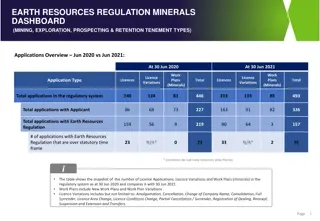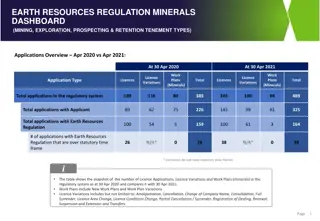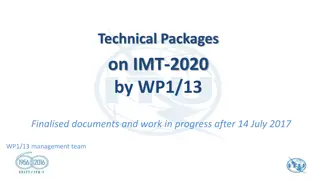
Statistical Moment Theory in Pharmacology
Explore how Statistical Moment Theory aids in non-compartmental analysis in pharmacology, providing insights into macroscopic events and defining terms such as moments, macroscopic events, and mean residence time (MRT).
Download Presentation

Please find below an Image/Link to download the presentation.
The content on the website is provided AS IS for your information and personal use only. It may not be sold, licensed, or shared on other websites without obtaining consent from the author. If you encounter any issues during the download, it is possible that the publisher has removed the file from their server.
You are allowed to download the files provided on this website for personal or commercial use, subject to the condition that they are used lawfully. All files are the property of their respective owners.
The content on the website is provided AS IS for your information and personal use only. It may not be sold, licensed, or shared on other websites without obtaining consent from the author.
E N D
Presentation Transcript
Presented to: Dr. Ahmad Mahmood Dean Faculty of Pharmacy HajveryUniversity
Ali Mansoor(933) Hafiz Rahat Riaz Rana(917) Muhammad Umair(864) Syed Abbas Sajjad (890) Syed Qasim (891) Harry Hamid (915) Abdullah Yaqoob(928) Hafiz Asad (862) Ahmad qayyum (883) ShakeelAhmad (882) Hasnain(871) AL-Meezan(910) UsmanAli (936)
Statistical moment theory help in Non- compartmentalanalysis. In such model, no specific compartmental modelhasbeenassignedto thedrug. Statistical moment theory provides a unique way to study time-related changes in a macroscopicevent.
Moments are the defined terms for specified statistical functions. Represented by . Moment Statistical Function 0th 0 Weight 1st 1 Mean
The overall event brought about by the constitutive elements is called a Macroscopic event. Example If a dose of tracer molecules is injected in a tank to track the residence time of the drug that stay in the tank then: Constitutive elements = tracer molecules Macroscopic event = Residence times shared by the molecules (tracer and drug)
All molecules that exit from the tank are ?? ??? = ?? 0 The rate of exit of tracer molecules (??? by the total number of molecules (Do) gives probabilitydensityfunction.Itistakenas? ? . ??) divided
MRT describes the average time that drug molecule staysin thebody. If drugdose Dois administered as IV bolus then: The drug molecules distribute throughout the body. The molecule stay in the body for various time periods. Some molecules of drug leave the body immediately after entering. Whereas, other drug molecules leave the body at a muchlatertimeperiods.
The average time of residence, of the molecules in the dose, is called the mean residencetime(MRT).
The probability density function f(t) multiplied by the tmand integrated over time yield the moment curve. So, the mthmoment or mmay be written as: tmf(t).dt m= --------(1) 0 m=moment t= time f(t)= probability density function
If m=0 then the area under the zero moment curve will be calculated by substituting m=0 in equation (1) m=0 f(t).dt -----------(2) 0 = 0 tmf(t).dt m = 0 f(t)= Drug concentration as a function of time The zero moment is referred to as area under the curve (AUC).
If we are considering the first moment calculations then by substituting m=1, the equation (1) becomes. m=1 t1f(t).dt 1 = 0 -----------(3) tmf(t).dt m = 0 This is the mean of the data distribution and it gives the area under the first moment curve (AUMC).
Cp= plasma Concentration t= time
0 t1 t2 t3 tlast
AUMC0 = AUMCot + ?? ? ? x ?? ?? ?? ? AUC0 = AUCot + ?? ?? Ct = plasma concentration at time, t ? = elimination constant t= tlast
AUC & AUMC, therefore MRT, can only be calculated after a drug is administered as a single dose. It is very difficult to measure AUC & AUMC for moment-time data at steady state. So MRT can t be calculated at steady state.
-???????? MRT= ????0 ???0 2 WHEREAS Duration= duration of drug infusion. AUC0 = Area under the concentration-time curve (or zero moment curve) from t=0 to infinity AUMC0 = Area under first moment-time curve from t=0 to infinity.
Applied Biopharmaceutics & Pharmacokinetics by Leone Shargel & Andrew B.C, Yu. 7th edition, chapter 25, page 835-838







